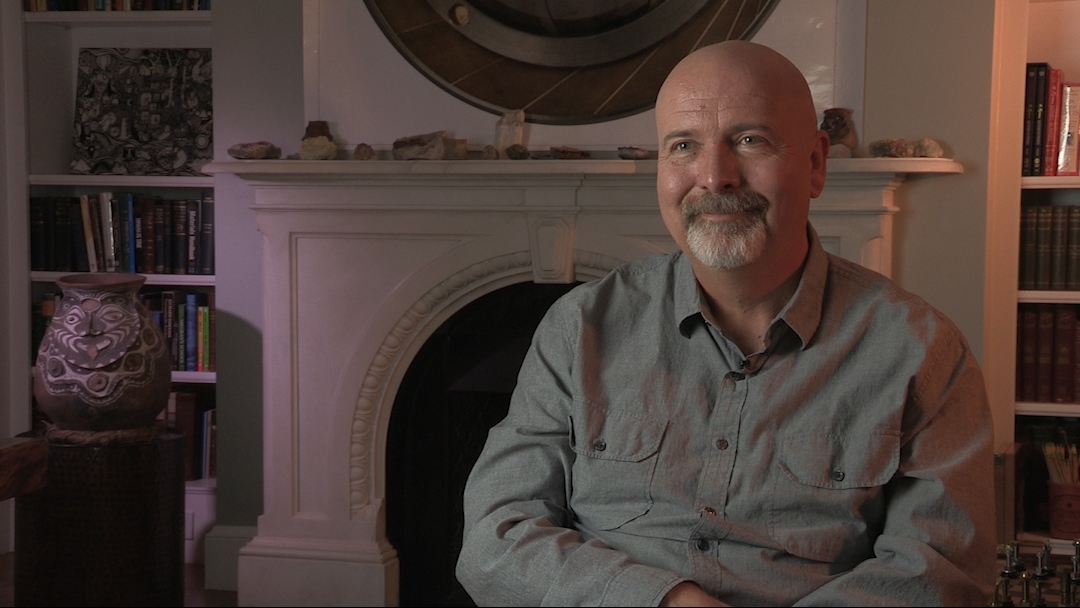NEXT STORY

Getting a fellowship from the Hertz Foundation
RELATED STORIES

NEXT STORY

Getting a fellowship from the Hertz Foundation
RELATED STORIES


|
Views | Duration | |
|---|---|---|---|
| 111. Picking locks to get a calculator | 121 | 03:56 | |
| 112. My regretful contribution to Simon | 136 | 02:37 | |
| 113. Getting a fellowship from the Hertz Foundation | 135 | 03:40 | |
| 114. 'In times of national emergency, real or imagined' | 114 | 03:30 | |
| 115. Feeling rich as a student | 128 | 01:06 | |
| 116. Being on the board of the Hertz Foundation | 111 | 01:50 | |
| 117. How Edward Teller was set up | 284 | 03:29 | |
| 118. People who influenced my generation of scientists | 134 | 02:51 | |
| 119. The Manhattan Project and its influence on scientists | 151 | 03:47 | |
| 120. Thinking Machines – a magnet for great people | 131 | 03:01 |


The whole time I was designing this chip for Milton Bradley, which was a video game chip and I had... you couldn't really put enough memory to hold the picture of the video game, so I invented this thing which I called 'pixies', but it turned out 'pixies' was trademarked, so we changed the name to 'sprites'. But it was little patches that moved around on the screen and I made a sample video game, which was, for most people, like, at Texas Instruments, the first time they'd ever played a video game on the simulator. And so everybody got very excited about it, but then Milton Bradley chickened out of going into the video game business. And they decided it was too expensive a product, they couldn't sell it through normal toy channels. They mostly sold things like checkers sets, Candyland was their big seller. In fact, when I was at Milton Bradley, the guy in the office next to me was Hoolie, the guy who invented Candyland. And in fact, when I was working on the... and so I explained to him that I could make the Simon play lots of different games, and it just didn't have to be one, and Hoolie said to me, I still remember, he said, 'Kid, let me explain to you something about games.' He said, 'How much do you think you can charge for a checkers set?' And the answer was, about five dollars. 'How much do you think charge for a chess set?' And the answer was about $15. And he was like, 'How much do you think you can charge for a combination chess set, checkers set?' And the answer is actually less than what you can charge for a chess set. And so I've always remembered that lesson, and in fact my one contribution... and the sad news is my idea of having the Simon play multiple games actually did get into the Simon, and it's the worst thing about Simon. Simon actually does have a switch on it that lets you play a few different games, and it would be probably better without that switch, but that switch was my contribution. Which Hoolie correctly tried to talk me out of. And so I learned a lesson from that mistake.
W Daniel Hillis (b. 1956) is an American inventor, scientist, author and engineer. While doing his doctoral work at MIT under artificial intelligence pioneer, Marvin Minsky, he invented the concept of parallel computers, that is now the basis for most supercomputers. He also co-founded the famous parallel computing company, Thinking Machines, in 1983 which marked a new era in computing. In 1996, Hillis left MIT for California, where he spent time leading Disney’s Imagineers. He developed new technologies and business strategies for Disney's theme parks, television, motion pictures, Internet and consumer product businesses. More recently, Hillis co-founded an engineering and design company, Applied Minds, and several start-ups, among them Applied Proteomics in San Diego, MetaWeb Technologies (acquired by Google) in San Francisco, and his current passion, Applied Invention in Cambridge, MA, which 'partners with clients to create innovative products and services'. He holds over 100 US patents, covering parallel computers, disk arrays, forgery prevention methods, and various electronic and mechanical devices (including a 10,000-year mechanical clock), and has recently moved into working on problems in medicine. In recognition of his work Hillis has won many awards, including the Dan David Prize.
Title: My regretful contribution to "Simon"
Listeners: Christopher Sykes George Dyson
Christopher Sykes is an independent documentary producer who has made a number of films about science and scientists for BBC TV, Channel Four, and PBS.
Tags: Milton Bradley, Hoolie
Duration: 2 minutes, 37 seconds
Date story recorded: October 2016
Date story went live: 05 July 2017